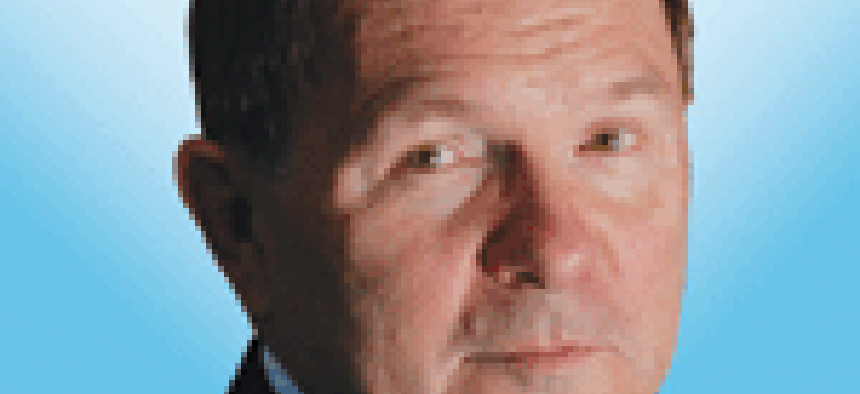How to pick the right BD leaders for today's environment

Today's market is changing rapidly and in part two of a two part series we explore how to identify the right BD leader for business environment you find your company in.
Editor’s Note: This is part two of a two-part series looking at how a changing environment demands a new BD leadership approach. Click here to read part one.
The rapidly changing political landscape demands that companies perform an honest and rigorous assessment of their business development organization.
In part two of this two part series we explore three distinct business environments and the characteristics BD leaders need to excel within each. Part one laid out the formula for assessing the strategic, operational tactical elements a BD organization needs.
BD leaders and the approach required for their success are often defined by the existing organizational environment and the situation they are operating within. Situations tend to align with the following three categories: Transition, Growth and Sustainment.

Image source: MBDi
Transition Environment/Transition BD Leader
Transition or turn-around is the most disruptive and challenging environment of the three. Transition situations require a significant shift of thinking and behavior within a BD organization and may be precipitated by a change of BD and other leadership.
The Transition environment is characterized as follows:
- Declining growth or revenue stagnation.
- Toxic culture; loss of trust between personnel and senior leadership.
- Significant turnover, lack of personnel retention.
- Change of culture, processes and strategy triggered by acquisition.
- The need to change from a reactive, ‘chasing’ business to a proactive ‘shaping’ business mindset.
Due to the nature of the work involved, transition BD leaders are usually short-term leaders. They are masters at assessing the situation, developing the transition plan, assessing the team and quickly removing the “dead wood.”
The transition BD leader must have the capability to:
- Quickly determine the root cause of BD challenges.
- Prioritize key items requiring immediate change.
- Break glass in a safe but necessary manner.
- Garner immediate trust of the organizational team below them and the leadership above them.
- Challenge existing thinking and behavior necessary to force change rapidly.
Growth Environment/Grow BD Leader
The growth environment is as challenging as the transition environment, but for much more positive reasons. In this environment, the strategic components are generally aligned, and the BD team is focused on balancing pipeline growth while ensuring the operations and delivery organizations are keeping pace with client orders.
The growth environment is characterized as follows:
- Stable and growing revenue; the beginning of a valid pipeline.
- BD processes that assist in prioritizing opportunity pursuits.
- Confidence to qualify or disqualify opportunities, yet it remains hard to selectively shape the best opportunities.
- Frequent acquisitions for additional offerings of services and partnerships.
- BD personnel shortages requiring the identification, selection and development of new individuals.
The grow BD leader is someone who can focus on the short-term, tactical target as well as the long-term strategic vision. They have experience ensuring that the people, process, plans and organization structure can stay ahead of corporate growth. They typically have an entrepreneurial business mentality, they know how to build a business from within a business, and often have grown a smaller business unit or been part of an acquired business unit.
The grow BD leader must have the capability to:
- Quickly recruit and develop BD personnel.
- Align their individuals in the four boxes of business development and picture them as shepherds, hunters, farmers and warriors.
- Focus on the operational and tactical components of the business, and quickly integrate new acquisitions that sustain organic and strategic growth.
- Realign the organization structure to leverage opportunities.
- Maintain a constant process and focus on improving personnel and processes.
Sustain Environment/Sustain BD Leader
The sustain environment is by far the easiest of the three. Conditions are stable, usually the rapid growth and transition is well behind the organization. Most of the critical components in the strategic, operational and tactical levels are aligned. The focus is on keeping the wheels turning with an emphasis on effectiveness, efficiency and personnel development.
The sustain environment is characterized as follows:
- Established products and services in the marketplace; new offerings being developed.
- Solid backlog of revenue.
- Trusted relationship between BD organization and clients.
- Strong brand or company recognition in the market.
- Well-established and scalable internal and external BD processes.
With a well-established, strong operational infrastructure behind them, the sustain BD leader has the right mechanisms in place to focus on the future, identify and prospect to the right clients, and push the edges of the business model. They bring an efficiencies-driven mindset to uncover more sustainable ways of working. They demand a strong, collaborative team, and provide opportunities for their personal and professional development.
The sustain BD leader has the capability to:
- Evaluate situations from a strategic, operational and tactical perspective.
- Drive efficiencies throughout the organization.
- Leverage experience to focus on personnel development.
- Strategically take risks to develop new technologies and products.
- Orchestrate the coordination of several areas of the business to sustain revenue growth.
Does my current BD leadership style match my current environment?
BD leaders are highly experienced individuals and are drawn to positions within one of these environments. Some may be experienced in two of these environments, with only a handful having the skills and ability to excel in any of these environments. By evaluating your present revenue-generation environment you can better assess the leadership you have, and whether your current culture aligns with where you are today, as well as where you need to get.
John Maxwell’s quote of “A leader is one who knows the way, goes the way, and shows the way.” is highly applicable in a business development organization.

